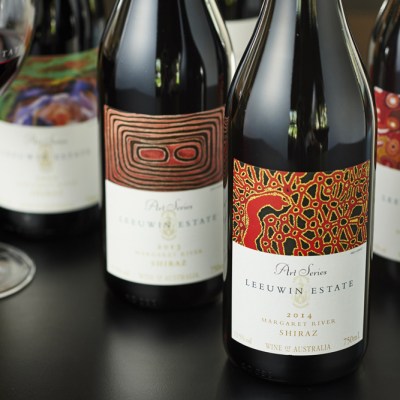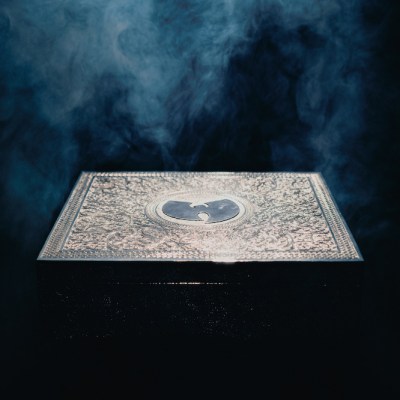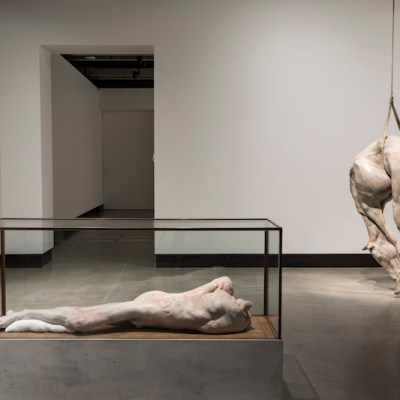From the January 2025 issue of Apollo. Preview and subscribe here.
Heading towards the Museum of Old and New Art (Mona) in Tasmania on artist-decorated ferries from Hobart’s main port, with rock music and a free-flowing bar, is a heady experience. The feeling immediately dissipates upon docking at the Berriedale Peninsula, when visitors are ejected and must then climb 99 steps to the entrance of the museum – as instructed by the museum’s eccentric founder, David Walsh, a professional gambler, philanthropist and Hobartian. Out of breath after the descent, they then must descend 20 metres into the darkness of the underworld to seek out the exhibitions.
This museum is equal parts Bond villain hideaway and architectural marvel, an immense structure built three levels down into the Triassic sandstone. It has attracted and repelled critics; as Charles Saumarez Smith says, ‘I sometimes got the sense that Walsh was trying to irritate the hell out of people like me by designing his museum so wilfully unconventionally.’ Yet, he adds ‘there is an undeniable attraction to its “proactive unconventionality”’.
Mona’s main internal staircase, which takes visitors down to the museum’s depths. Photo: Rémi Chauvin/Mona; courtesy Mona, Hobart
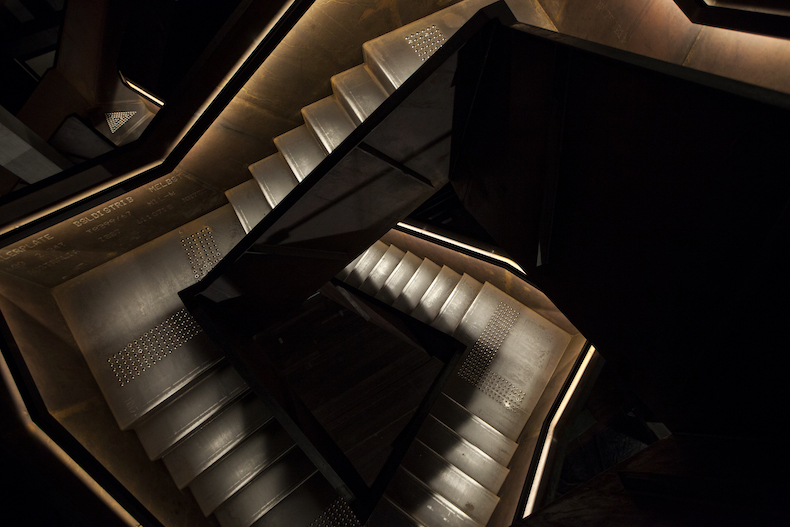
Established in 2011 to house Walsh’s growing art collection, Mona is the southern hemisphere’s largest private museum. It also has an on-site winery, Moorilla, which is one of the oldest in Tasmania.
There is a ritualistic connection between the experiences of wine and art, Walsh believes. ‘We used to engage in a Bacchic mentality: the raucous spirit of celebration rolling into desperation and harm.’ The museum was built underground so as not to disturb Moorilla Estate’s original buildings, which were designed by one of Australia’s leading architects, Sir Roy Grounds, in the 1950s. In 1995 Walsh purchased the Moorilla winery (and its sister estate, Domaine A, further inland on the island in 2018). Intent on preserving Hobartian culture, Walsh has continued the work of the winery’s founders, Claudio Alcorso and Lesley Alcorso, who fostered a tradition of fine wine production in Tasmania in the 1950s.
Tasmania has a reputation for exciting wines that rarely leave the island due to local consumption. However, when HMS Bounty brought British settlers, along with the first vines, to Tasmania in 1788, these new crops failed. It was not until 1823 that Bartholomew Broughton established the first successful vineyard on the island. Today, there are some 230 vineyards, 185 producers and 6,000 acres of vines – which make up only 1 per cent of Australia’s total vineyards, though Tasmanian wine is worth 4 per cent of the total value of the country’s wine industry. Small yields and high quality means that they are impossible to source outside the island, so a wine connoisseur must make the trip to the ends of the earth to experience them.
Moorilla’s winemaker, the Canadian Conor van der Reest, has been given free reign by Walsh, with one stipulation: to make ‘stupendous wines’. Walsh wants the wines to be recognised, ‘whether it’s by the guy down the road or a wine writer from the other side of the world’. Tasmania’s ideal growing conditions mean that the tricky ‘heartbreak grape’, Pinot Noir, can thrive here, as well as Chardonnays to make sparkling wines. Van der Reest says that working with artists and creatives helps him understand the process of making, because his wines are never in one style – every vintage is different. ‘I don’t want to say we are creative types, but we are creating.’ Walsh insists on serving even the reserve vintages at the museum’s restaurants to ensure that the wine is shared with as many people as possible.
Cunts…and other conversations (2008–11), Greg Taylor. Photo: Jesse Hunniford/Mona; courtesy the artist/Mona, Hobart
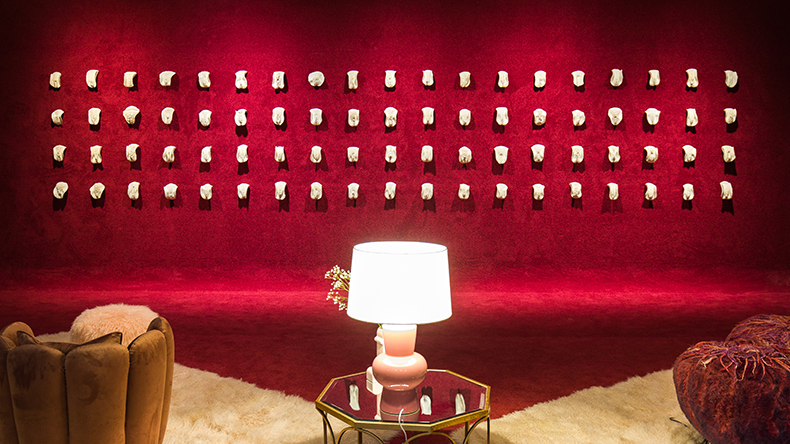
Mona is no ordinary gallery and no ordinary winery. Instead, it is cast in darkness and toe-stumblingly challenging to navigate. Get lost and you may stagger off a pathway in a James Turrell light tunnel, or get stuck under Ai Weiwei’s huge White House (2015). You will certainly double take when encountering a lacquered surface that is really a slick pool of oil: Richard Wilson’s 20:50 (1987; this version 2017). You will probably also hear voices, whispers from the deep bowels of the museum, which house Oliver Beer’s MONA Confessional (2019).
The collection is nominally devoted to works about ‘death and sex’. Contemporary works share the space with ancient artefacts, including Egyptian mummies and Roman and Greek antiquities. Walsh built Mona ‘to get the chicks’, and there are numerous erotic works of couples in flagrante, pieces hung on bordello-red velvet curtains, tassels and pouffes, phallic design furniture for visitors to rest on or straddle. Erotic prints from the 18th century by Torii Kiyonaga and Greg Taylor’s wall of porcelain vaginas, Cunts… and other Conversations (2008–11), add to the subversiveness.
The combination of the estate wines and Walsh’s collection invites visitors to participate in a bacchanalian ritual of sensuality and excess. ‘Trust Me, I own a Museum,’ reads a baseball cap visitors can purchase in the gift shop at the end of the subterranean journey, which of course many do, having re-emerged, perhaps transformed by delight, relief and pleasure, even if just for the day.
From the January 2025 issue of Apollo. Preview and subscribe here.
